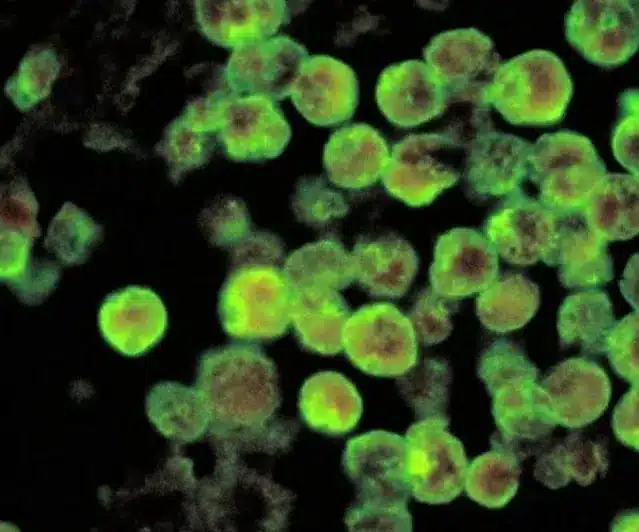What’s in today’s article?
- Why in News?
- What is Naegleria fowleri?
- What are the Symptoms of PAM?
- What are the chances of survival?
- What are the Treatment options?
- Prevention measures that a swimmer should consider
Why in News?
A five-year-old girl receiving treatment for a rare brain infection called primary amoebic meningoencephalitis (PAM), caused by the “brain-eating amoeba” Naegleria fowleri, has died at the Government Medical College Hospital in Kozhikode.
What is Naegleria fowleri?
- About
- Naegleria fowleri, commonly known as “brain-eating amoeba,” is a single-cell organism.
- It is found in a warm freshwater environment such as lakes, hot springs and even in poorly maintained swimming pools.
- First discovered in Australia in 1965, it is so small that it can only be seen with a microscope.
- Only one species of Naegleria, Naegleria fowleri, infects people.
- Human infection – process
- The amoeba enters the human body through the nose and then travels up to the brain.
- This can usually happen when someone goes for a swim, or dive or even when they dip their head in a freshwater body.
- In some cases, it was found that people got infected when they cleaned their nostrils with contaminated water.
- So far, scientists haven’t found any evidence of the spreading of Naegleria fowleri through water vapour or aerosol droplets.
- Once Naegleria fowleri goes to the brain, it destroys brain tissues and causes a dangerous infection known as primary amebic meningoencephalitis (PAM).
- The amoeba enters the human body through the nose and then travels up to the brain.
- Non-communicable in nature
- Naegleria fowleri infection does not spread from person to person, nor does it manifest symptoms when contracted in other forms.
- The infection is primarily associated with a warm freshwater environment, especially during hot summer months when water temperatures are higher.
What are the Symptoms of PAM?
- As per the US Centers for Disease Control and Prevention (CDC), the first signs of PAM start showing within one to 12 days after the infection.
- In the initial stages, they might be similar to symptoms of meningitis, which are headache, nausea and fever.
- In the later stages, one can suffer from a stiff neck, seizures, hallucinations, and even coma.
What are the chances of survival?
- Brain-eating amoeba can be fatal, with a recorded death rate of 97 per cent. The chances of survival from this infection are unfortunately low.
- The infection rapidly destroys brain tissue, leading to inflammation and neurological symptoms such as severe headache, fever, nausea, vomiting, stiff neck, seizures and coma.
- Early diagnosis and prompt initiation of treatment are crucial, but even then, the prognosis remains grim.
What are the Treatment options?
- The US-based Centers for Disease Control (CDC) recommends treatment with a combination of drugs, often including amphotericin B, azithromycin, fluconazole, rifampin, miltefosine, and dexamethasone.
- These drugs have been used to treat patients who survived. Miltefosine is the newest of these drugs.
- It has been shown to kill Naegleria fowleri in the laboratory and has been used to treat three survivors.
Prevention measures that a swimmer should consider
- Limit activities in warm fresh water bodies such as lakes, hot springs and ponds unless they are disinfected with chlorine.
- Use nose protection while swimming or diving, maintain clean swimming pools, follow proper hygiene, washing your hands thoroughly with soap and water before and after water activities, as well as before eating.
- Use sterile water for nasal cleaning.
Q.1. What is Centers for Disease Control and Prevention (CDC)?
The Centers for Disease Control and Prevention is the national public health agency of the United States. It is a United States federal agency under the Department of Health and Human Services, and is headquartered in Atlanta, Georgia.
Q.2. What is Amoeba?
Amoeba are single-celled organisms that can change their shape by extending and retracting pseudopods. They are also known as amoeboids and can be found in many types of eukaryotic organisms, including fungi, algae, animals, and protozoa.
Source: What is Naegleria fowleri or ‘brain-eating amoeba’, which led to a 5-year-old girl’s death in Kerala? | Indian Express | The Hindu
Last updated on December, 2025
→ Check out the latest UPSC Syllabus 2026 here.
→ Join Vajiram & Ravi’s Interview Guidance Programme for expert help to crack your final UPSC stage.
→ UPSC Mains Result 2025 is now out.
→ UPSC Notification 2026 is scheduled to be released on January 14, 2026.
→ UPSC Calendar 2026 is released on 15th May, 2025.
→ The UPSC Vacancy 2025 were released 1129, out of which 979 were for UPSC CSE and remaining 150 are for UPSC IFoS.
→ UPSC Prelims 2026 will be conducted on 24th May, 2026 & UPSC Mains 2026 will be conducted on 21st August 2026.
→ The UPSC Selection Process is of 3 stages-Prelims, Mains and Interview.
→ UPSC Result 2024 is released with latest UPSC Marksheet 2024. Check Now!
→ UPSC Prelims Result 2025 is out now for the CSE held on 25 May 2025.
→ UPSC Toppers List 2024 is released now. Shakti Dubey is UPSC AIR 1 2024 Topper.
→ UPSC Prelims Question Paper 2025 and Unofficial Prelims Answer Key 2025 are available now.
→ UPSC Mains Question Paper 2025 is out for Essay, GS 1, 2, 3 & GS 4.
→ UPSC Mains Indian Language Question Paper 2025 is now out.
→ UPSC Mains Optional Question Paper 2025 is now out.
→ Also check Best IAS Coaching in Delhi

















